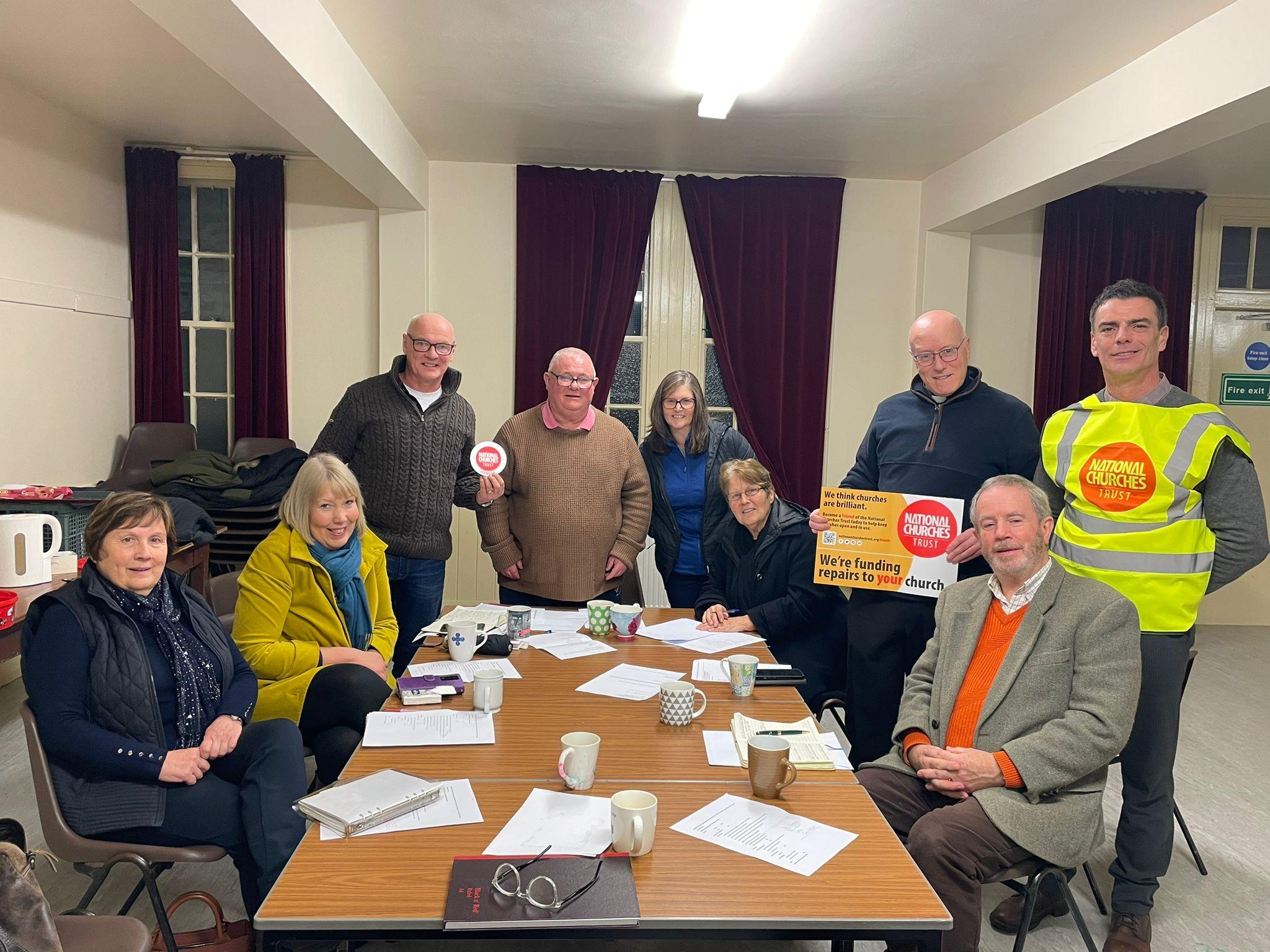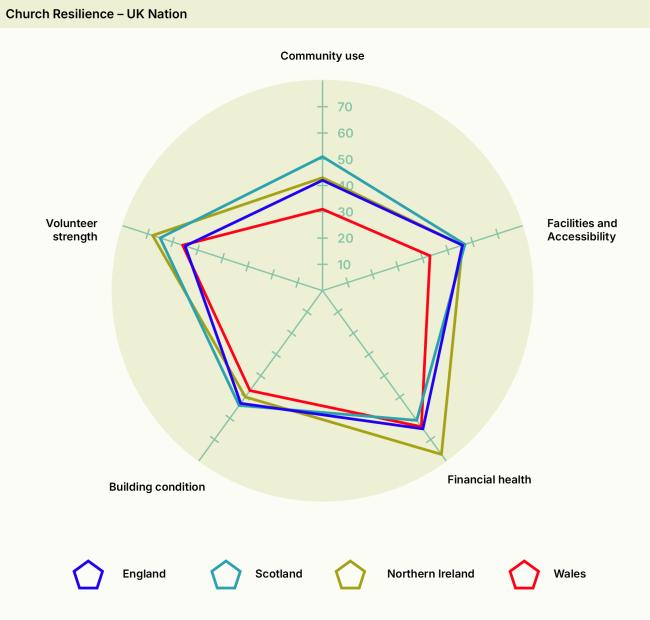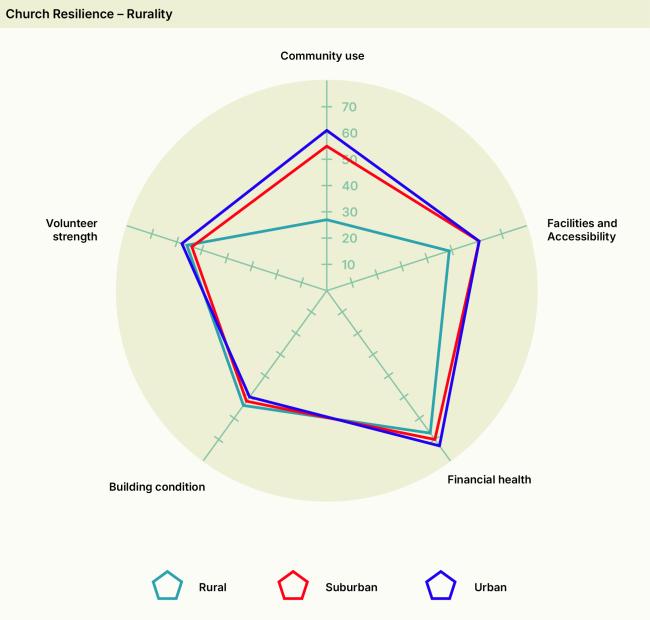
Web of church resilience
There are many factors which contribute to the ongoing resilience and sustainability of churches. These factors include but are not limited to finances, volunteer strength, engagement with the community, condition of the building and the facilities and accessibility on offer. All these come together to enable churches to serve their communities as places of worship, community hubs, visitor destinations and more. Many churches have been places of continual use over centuries. But it is the aforementioned factors which ensure a church building can be used in these ways for years to come.
Charting these factors together therefore gives us a sense of the sustainability of a church building and its congregation. None of these factors is uniquely able to make a church resilient for the future, neither should a shortcoming in one area be seen as a threat to a church’s survival. If church history tells us anything, it is that churches are remarkably resilient despite numerous varied and complex challenges.
The five main factors, however, can give a good indication of where churches stand. When these five strands are aligned, churches can be confident that their buildings, community work, and finances are in a strong position for future proofing the work of the church and securing the heritage of churches for generations to come.
To make this visible, we can map church resilience as a web, with the five factors radiating from the centre:
- Facilities and Accessibility: a high score demonstrates the suitability of facilities for community engagement and religious activities, and incorporates factors such as accessible entrances, Wi-Fi, and measures to make facilities environmentally friendly.
- Community Use: a high score shows that buildings are open regularly and are used by other groups in the community as well as for other activities put on by the church for the community.
- Volunteer Strength: a high score suggests that a church has sufficient volunteers to carry out the activities they want to carry out, and that volunteers play a significant part in the success of the church.
- Building Condition: a high score demonstrates good care of the church building, regular maintenance, regular inspections, and improvement in the fabric.
- Financial Health: a high score shows that a church has the funds to cover repair costs, secure funding streams, and an optimistic outlook for the next five years.
Together, these strands form the Web of Church Resilience. When they stretch outward evenly, the picture is balanced and resilient. When one collapses inward, perhaps through weak finances, poor facilities, or a shortage of volunteers, the entire web is distorted, leaving the church vulnerable.
The Link Between Building Condition and Resilience
The chart below maps two different types of church: those which say their fabric has improved and those who say it has worsened. What becomes clear is that building condition is related to other resilience markers. Churches which report deteriorating fabric have a smaller web, in which community engagement lessens, finances take a hit, and facilities become less suitable. The link is clear even if we cannot say for sure which comes first – fabric, finances, community engagement or facility decline.

Charting resilience by UK nation
When we chart each of the four nations on the web of church resilience what is clear is that each nation needs a targeted approach to help church buildings and their congregations to thrive.

Charting resilience by rurality
Rural churches face a challenge surrounding finances and community engagement. They lack the financial resources to host community activities. Volunteer strength score remains similar to those among urban and suburban churches, but this is more likely because they are not hosting as many community activities, as opposed to having large numbers of volunteers.

What emerges is a clear picture. Resilient churches are not defined by size, wealth, or raw volunteer numbers, but by balance. They are open and welcoming, sustained by committed, if few, volunteers, underpinned by sustainable finances, and all cared for with regular maintenance. Where all five strands of the web are strong, churches can be hopeful for their future. Where any one strand is weakened, the whole structure bends. These spider graphs, grounded in the National Churches Survey, show what is possible when people, buildings, and resources are aligned.
